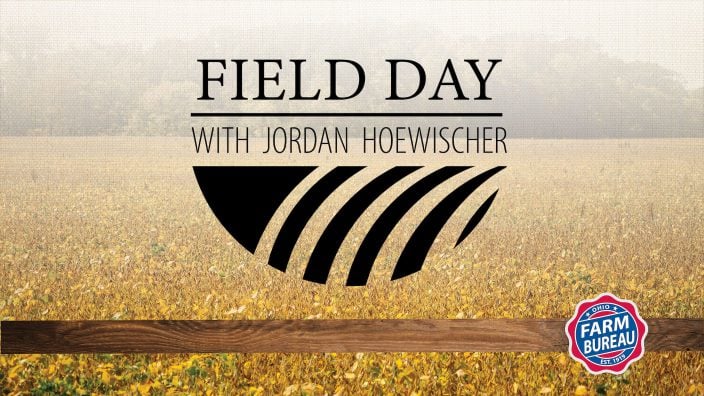Farmer’s Guide to Trucking Regulations available to Ohio Farm Bureau members
The guide includes a farm driver checklist, overview of state and federal regulations and exemptions, CDL qualifications and more.
Read More
On this episode of Field Day with Jordan Hoewischer, Dr. John Newton, chief economist at American Farm Bureau Federation, talks about the latest news involving ag trade, farm profitability, dairy reform, the next farm bill and provides an overall future outlook on the farm economy.
Field Day with Jordan Hoewischer is an ongoing series of conversations with experts and leaders who are helping to shape and secure the future of Ohio’s ag industry for generations to come.
Following are some highlights from this episode. Complete transcript
Jordan Hoewischer: Take us through where we’ve been the last couple of years. What’s been the general status of the ag world economy-wise in the last year or two?
Dr. John Newton [00:08:25] Well, you know, we came into 2019, we got the farm bill signed by the president in February of 2019. So we start to stand up those farm bill programs. At the same time, we had the market facilitation program starting to go out to help producers impacted by impacted by the retaliatory tariffs by China. So we had FSA standing up, not only a farm bill, but also getting the trade program up and running. And then last spring, I think Ohio in particular and some of the other states, we had record rainfall, which would significantly delay planting.
In some places, prevent plant was record high. We had nearly 20 million acres qualify for prevent plant last year. So I think the reduction in acreage and the reduction in yields last year actually helped us dodge a bullet a little bit, help us rebalance supply with demand. We came into this year (2020), I think, optimistic on the back of the trade agreements, the phase one deal with China, USMCA and US, Japan and South Korea, that that finally we knew that supply was going to bounce back this year. We knew those acres would come back, but we thought, OK, demand really going to pick up trade is going to pick up and the farm economy can start to turn around. And I think since mid-March, everybody’s world’s been turned upside down. And now we’ve been working for the better part of six months, seven months to get the CFAP program out the door. We’re now in the second round of CFAP assistance. I believe as much as $6 billion has gone out to help farmers in this second round. And so, you know, it’s been a whirlwind few years in terms of dealing with increased natural disasters, whether it’s hurricanes or wildfires or flooding, trade, war and now coronavirus.
Jordan Hoewischer [00:11:30] Since mid-March, our world’s been turned upside down…But how has the ag world been? I know we’ve rode the roller coaster of production plants being shut down on the livestock side. Obviously trade has been affected.
Dr. John Newton [00:12:05] Well, in you know, in April, we did see a lot of livestock processing go down as they went in to put in the personal protective equipment and clean the facilities. Many facilities were down for a 14-day stretch to put in all that personal protective equipment. We saw the same thing happen in the ethanol plants, although not related to workers getting sick, but negative ethanol plant profitability. So they idled their processing capacity, reduced the demand for corn.
But we bounced back. Meat production is right at about year ago levels, and I think that’s a lot faster than many had anticipated. We’re not out of the woods yet. As we look around the country of potential new cases of the coronavirus or surging, hopefully those workers can remain safe and keep those plants open. But again, meat production has recovered a lot faster. We’ve still got a backlog of animals that that are ready for processing. Ethanol plant capacity has come back, but not to where it used to be. But it’s bounced back.
And then you talk about trade. I think when you look around the world and many of the economies are in a recession, that’s going to impact their purchasing capacity. And so agricultural exports in most of our top markets, Canada, Mexico, Japan, South Korea, the European Union are all below where they were last year. I think China is probably the only place where sales are a little bit stronger so far this year than they were last year.
Jordan Hoewischer [00:21:02] We have seen soy and corn prices have some increase. So how do we even remotely guess what 2021 looks like?
Dr. John Newton [00:21:29] Well, we’re still trying to figure out what crop we got on our hands right now in terms of as harvest nears completion, how many bushels are we going to have? How strong are those exports going to continue? And I think the prices this fall and early spring will lead to some of those acreage decisions on how many acres of corn do we plant, how many acres of soybeans. The soybean inventory level has come back down pretty low. It’s expected to end the year somewhere around 300 million bushels, which is the lowest level in several years. So there certainly are probably going to be an interest in getting soybeans in the ground next year.
But I think a lot depends on what happens in South America. The pace of planting in Brazil is much slower than normal. So they’re having a difficult, difficult time getting the crop in the ground. How does that impact their crop size? This year will be important to watch. And then as we get into 2021 assuming Coronavirus is behind us. Hopefully then we’re going to have pretty strong production of our livestock products, strong milk production. We’ll likely not to see a substantial reduction in acres so then it becomes a demand question again in terms of prices. And so can we sustain the demand on the demand front? Will demand improve in 2021 as economies start to recover? And again, those are all questions that we just don’t know the answer to just yet.
Jordan Hoewischer [00:23:26] So I know another part of our industry that’s near and dear to your heart is dairy. Obviously dairy was hit hard I think this spring (2020) with just the normal stuff that happens, but also with schools closing down and then, somehow putting restrictions on how many gallons of milk people can buy at the store. How’s dairy been able to withstand the COVID-19 season?
Dr. John Newton [00:23:55] Well it’s been a tale of the dairy processing industry and then a different tale of the dairy farmer, We saw the USDA food box program come in and really lift the prices of cheese. So we saw cheese at a record high, $3 a pound. And that was right after milk prices had had collapsed in April. But all that money didn’t necessarily make it back to the dairy farmer. And I think that’s been the challenging issue with the price volatility we’ve seen.
Dr. John Newton [00:24:29] We’ve seen low prices for some dairy products and high prices for others. And it’s just created a really perplexing time for dairymen trying to figure out what their milk price ultimately is going to be. And I think that’s leading to some renewed interest on reform of these federal milk marketing orders into how do we address some of these unintended consequences that have happened.
Jordan Hoewischer [00:24:58] Reform seems to be the way to go. So, my next question was going to be how would you solve the industry crisis at the dairy farm?
Dr. John Newton [00:25:18] Well, I mean, the way milk is priced in the US is very complicated. And it’s a system that’s decades old and is very difficult to change. So, you know, I think there are some, well, considerations floating around on how to address some of these challenges. I think it’s important that the dairy farmers get involved and have an opportunity to have their voices heard. And we’re working on Capitol Hill to try to help in that capacity.
Dr. John Newton [00:25:52] But, you know, it’s hard because I think some in the industry just want to make some minor tweaks to deal with the issue. Some may be thinking more revolutionary, but milk pricing is probably the most complicated aspect of foreign policy that I’ve ever engaged in in terms of understanding all the twists and turns.
Jordan Hoewischer [00:26:13] I don’t think I ever realized that until just now. And I’m sure most Americans don’t understand that either. They just think, well, there’s milk and then there’s a volume and a poundage and it gets it gets priced accordingly. And that is what it is.
Dr. John Newton [00:26:29] It’s absolutely not the case. It’s not milk. It’s protein, it’s butterfat. It’s lactose. And then a farmer can’t just go out and sell their milk for any price. They’re price takers.
Dr. John Newton [00:26:43] The federal government highly regulates the price discovery process for milk. Most of the milk in the country is marketed by dairy cooperatives. And you’ve seen massive concentration in the industry in the last six months alone, where we now have the nation’s largest dairy cooperative operating the largest milk bottler in the country. And so the dairy industry is undergoing massive structural changes. Yet we’ve got a pricing system in this country that’s decades old.
Jordan Hoewischer [00:27:20] Well, we’ll switch gears here to MFP and CFAP and some of those programs that are providing direct payments to farmers. From some of the stuff I’ve seen you put out and USDA puts out, net cash income has been trending down for farmers since early 2010…and some of that’s been backfilled by direct payments from the government, especially recently with the trade stuff. How do we stem the tide? Is it just opening up those markets? How do we stem the tide of having to rely more on direct payments versus getting those cash receipts back up?
Dr. John Newton [00:28:24] Well, you know, these were ad hoc payments to offset retaliatory tariffs and demand destruction due to COID-19. So they’re not permanent programs. They will go away. They will not be here next year (2021). And so we need to plan accordingly. And we need to work with farmers to work with their lenders, look at their input cost, be good marketers. There’s an opportunity to market right now at higher prices. Take that into consideration. But these ad hoc support payments are going to go away soon. There’s conversations about whether or not the farm bill is adequate enough to provide the level of protection that people need. And I’m sure that will be part of the next farm bill debate that will start in earnest during this next Congress.
Jordan Hoewischer [00:29:15] What is the next frontier on the farm bill for the next cycle? I’m sure each time we talk about a new farm bill it seems like you just talked about the old one, but that’s kind of how it how it works. What is that next frontier for the farm bill?
Dr. John Newton [00:29:29] Well, I think the next frontier for the farm bill really depends on how much of a budget we have for farm programs. If Congress is to figure out a way to appropriate new funding, then maybe we can make some of these programs better. Well, but what if we don’t, then there’s unlikely to be a lot of resources to substantially change what these programs look like. But, at this point, we haven’t really started surfacing and having those policy conversations with members. And I think as we get closer and closer to 2023, it will be important for Farm Bureau members to really start to have the conversation on policy development and what they’d like to see in the next farm bill.
Jordan Hoewischer [00:32:18] Switching gears again, how do we see other export markets opening up? Obviously we’ve had some ups and downs with other parts of the world. Do we see any change in the future with how some of the other parts of the country or other parts of the world will open up?
Dr. John Newton [00:32:35] Well, I think our existing FTA partners, it really hangs on their economic recovery after coronavirus. And how long of a recovery are we going to see. In terms of other parts of the world, there’s efforts underway to improve our access to Kenya. There’s efforts underway to improve relationships with Brazil and the United Kingdom and maybe, you know, in other parts of Southeast Asia. But again, I think a lot of what happens is really going to depend on what happens in early November in the United States and whether or not we’re dealing with the same administration or a new administration that may pivot and seek to do other things on the trade front. So I think it’s uncertain at this point.
Jordan Hoewischer [00:33:47] Are there any other farm policy things from your side of the world that you think are important to talk about?
Dr. John Newton [00:34:01] Well, I think the other major component that we haven’t talked about is, is climate smart adoption of more conservation practices in agriculture. This is something that the consumers are demanding. The investment community is demanding. The food companies are demanding it. It’s not an issue of should we do it? It’s an issue of how we do it and how do we create the proper incentives to increase the adoption of these practices across the country. So, you know, we’re still working with our members to figure out where they want to be. We know that we want anything that has to be a voluntary program, not a new mandate on farmers. And we’re hopeful that through the development of carbon markets, through the development of ways to accurately measure carbon sequestration efforts or efforts to improve water quality, that some of these practices can actually be an income generator on the farm. And when we talked earlier about what’s next for the farm economy, if we can figure out a way to capture the value associated with carbon sequestration, I think that can really help farmers across the country and be a new income stream.


The guide includes a farm driver checklist, overview of state and federal regulations and exemptions, CDL qualifications and more.
Read More


Katie Share of Columbus has been named ExploreAg and Youth Development Specialist for Ohio Farm Bureau.
Read More

Mary Klopfenstein of Delphos has been named Young Ag Professional and Ag Literacy Program Specialist for Ohio Farm Bureau.
Read More

The plan has been updated to give sole proprietors access to more rate stability and a smart solution that offers potential savings on health care.
Read More

The American Farm Bureau Federation, in partnership with Farm Credit, is seeking entrepreneurs to apply online by June 15 for the 2025 Farm Bureau Ag Innovation Challenge.
Read More

Adele Flynn of Wellington has been elected treasurer of the Ohio Farm Bureau Federation and now holds the third highest elected office in Ohio’s largest and most influential farm organization.
Read More

Producers are urged to work with their veterinarian to practice enhanced biosecurity measures and review and limit cattle movements within production systems.
Read More

The changing seasons bring with them the need to thoroughly inspect pole barns for any damages that may have occurred during the winter months.
Read More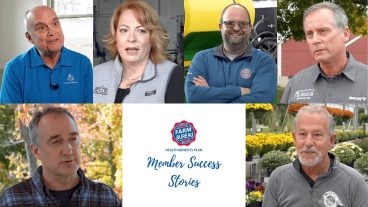
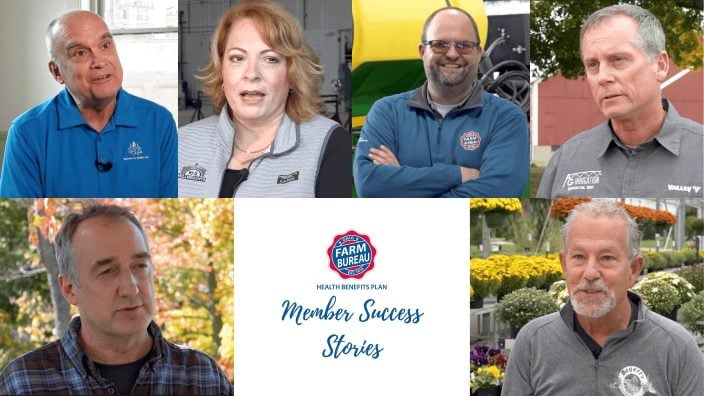
Hundreds of Ohio businesses and sole proprietors are raving about Ohio Farm Bureau’s Health Benefits plan with lower, predictable costs and easy enrollment and administration options.
Read More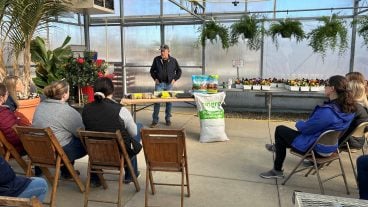
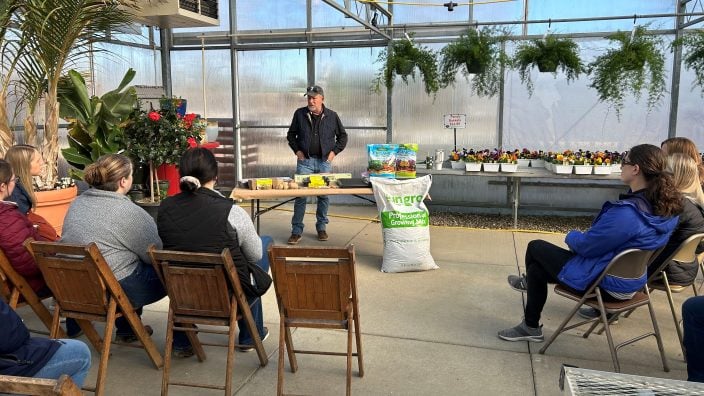
AgriPOWER Class XIV spent a few days in March in Medina and Wayne counties learning more about northern Ohio agriculture from leaders in Ohio Farm Bureau.
Read More